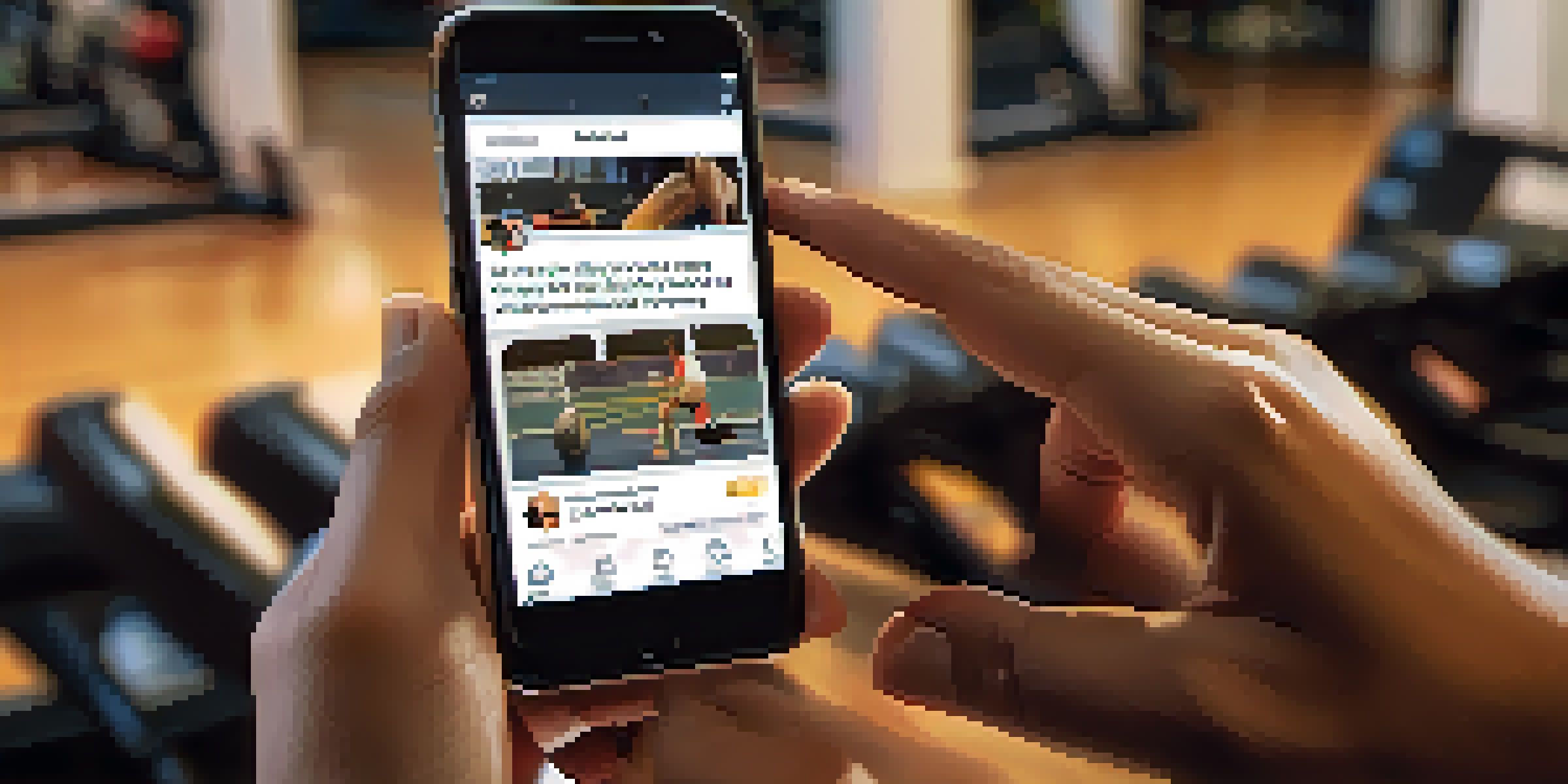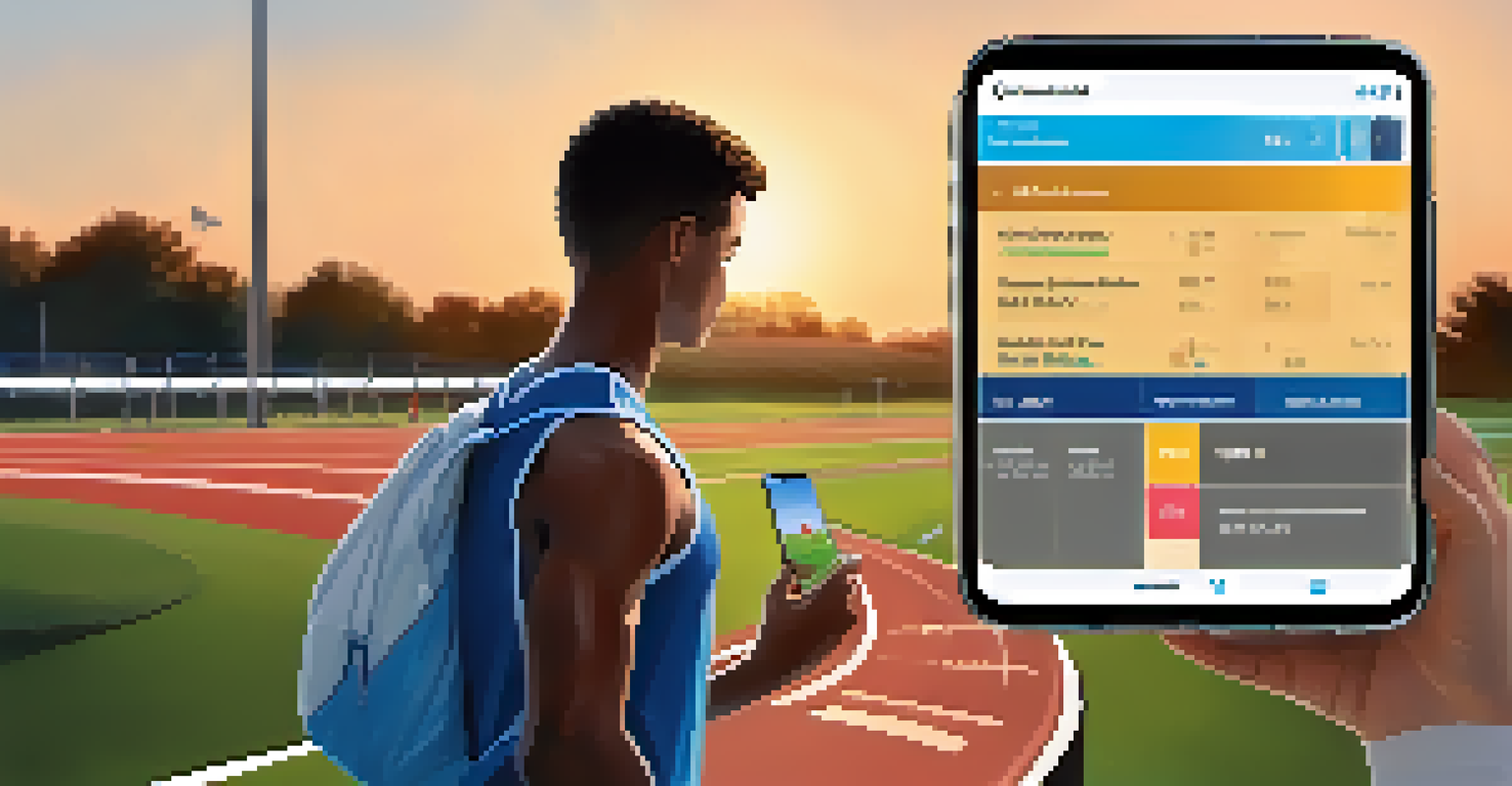The Impact of Social Media on Injured Athletes’ Recovery

Understanding the Role of Social Media in Recovery
Social media has become an essential tool for athletes, especially during recovery phases. It serves as a platform for sharing experiences, which can foster a sense of community. When athletes post about their injuries, they often receive encouragement and support from fans and fellow athletes alike, which can enhance their motivation to recover.
Social media is not just a tool; it's a lifeline for athletes navigating the ups and downs of recovery.
This connection can be particularly beneficial during tough times when athletes may feel isolated. A simple comment or message can make a world of difference in maintaining morale. Furthermore, the visibility of their journey can also inspire others facing similar challenges, creating a ripple effect of positivity.
Ultimately, social media acts as a double-edged sword. While it offers support, it can also expose athletes to criticism or unrealistic comparisons, so it's crucial for them to navigate this space mindfully.
Building a Support Network Through Online Communities
Online communities provide injured athletes with a unique support system that transcends geographical barriers. Platforms like Instagram and Twitter allow athletes to connect with others who have experienced similar injuries. These connections can lead to sharing valuable tips and encouragement, which can be instrumental in the recovery process.

For instance, an athlete recovering from a knee injury might find solace in a group dedicated to sharing rehabilitation experiences. Hearing success stories from others who have been through similar struggles can instill hope and determination. The exchange of advice on both physical and mental recovery strategies can also enhance their healing journey.
Social Media Boosts Recovery Motivation
Sharing recovery milestones on social media helps athletes stay motivated and connected with their support network.
Moreover, these communities often celebrate milestones together, no matter how small, which can significantly boost an athlete's morale. The sense of belonging can help combat feelings of loneliness that often accompany injuries.
The Impact of Sharing Progress and Milestones
Sharing recovery milestones on social media can be a powerful motivator for injured athletes. Each post, whether it's about completing a workout or achieving a small goal, serves as a reminder of their progress. This can create a positive feedback loop, encouraging them to stay committed to their rehabilitation plans.
The greatest glory in living lies not in never falling, but in rising every time we fall.
Additionally, followers often engage with these updates, providing instant feedback and encouragement. This kind of interaction can reinforce an athlete’s motivation to push through difficult days. The excitement of sharing achievements can also make the recovery process feel less daunting.
However, athletes must balance sharing their journey with maintaining their privacy. It's essential to set boundaries to avoid the pressure of constant performance expectations from their audience.
Navigating Public Scrutiny and Pressure
While social media can offer support, it can also expose injured athletes to scrutiny. The public nature of platforms means that every update is open to commentary, and not all of it is positive. Athletes may face pressure to recover quickly or to meet unrealistic expectations set by fans and media.
This scrutiny can lead to anxiety and stress, potentially hindering their recovery process. For many athletes, the fear of disappointing their followers can overshadow their need to prioritize their health. It’s crucial for athletes to remember that their recovery journey is personal and shouldn't be dictated by external opinions.
Navigating Scrutiny During Recovery
Athletes must manage the pressure and scrutiny from social media while prioritizing their health and personal recovery journeys.
To combat this, some athletes choose to limit their social media presence during recovery. Others may opt to share only what they feel comfortable sharing, allowing them to maintain control over their narrative.
The Role of Social Media in Mental Health Awareness
Social media has significantly contributed to raising awareness about mental health, especially among athletes dealing with injuries. Many athletes use their platforms to discuss the psychological challenges of recovery, shedding light on the importance of mental well-being. This openness can help destigmatize mental health issues, encouraging others to seek help when needed.
By sharing their struggles, athletes can connect with fans and fellow athletes who may be experiencing similar feelings of anxiety or depression. These conversations can lead to a greater understanding and acceptance of mental health challenges in the sports community. It fosters a culture where seeking support is seen as a strength rather than a weakness.
Moreover, initiatives and campaigns surrounding mental health often gain traction through social media, amplifying their reach and impact. This creates a more supportive environment for all athletes, not just those recovering from injuries.
Harnessing Social Media for Educational Resources
Athletes can leverage social media as a valuable resource for educational content related to their recovery. Many professionals, such as physical therapists and trainers, share tips and exercises specifically tailored for rehabilitation. This access to expert advice can empower athletes to take charge of their recovery journey.
For example, an athlete might come across a video tutorial on proper stretching techniques that could alleviate pain or prevent further injury. Engaging with this content enables them to learn from diverse perspectives, enriching their understanding of the recovery process. Additionally, many athletes share their own experiences, creating a wealth of knowledge that others can draw from.
Community Support for Mental Health
Online communities foster connections among athletes, promoting discussions about mental health and encouraging a supportive environment.
However, it’s essential for athletes to critically evaluate the information they consume online. Not everything shared on social media is accurate, so they should ensure they follow credible sources.
Conclusion: Finding Balance in the Digital Age
In conclusion, social media can significantly impact the recovery journey of injured athletes, providing both support and challenges. While it offers a platform for connection, motivation, and education, athletes must remain mindful of the potential pressures and scrutiny that come with it. Finding a balance between sharing their journey and prioritizing their mental and physical health is crucial.
Athletes should approach social media with intention, using it as a tool to enhance their recovery rather than hinder it. By creating boundaries and curating their feeds, they can cultivate a positive online environment that supports their healing process.

Ultimately, the key is to harness the positive aspects of social media while being aware of its pitfalls. With the right mindset and tools, athletes can navigate their recovery journey with resilience and strength.